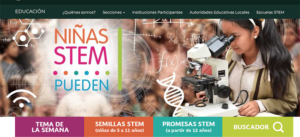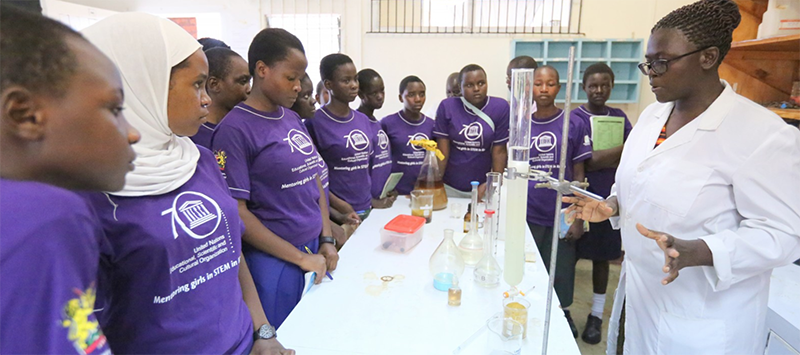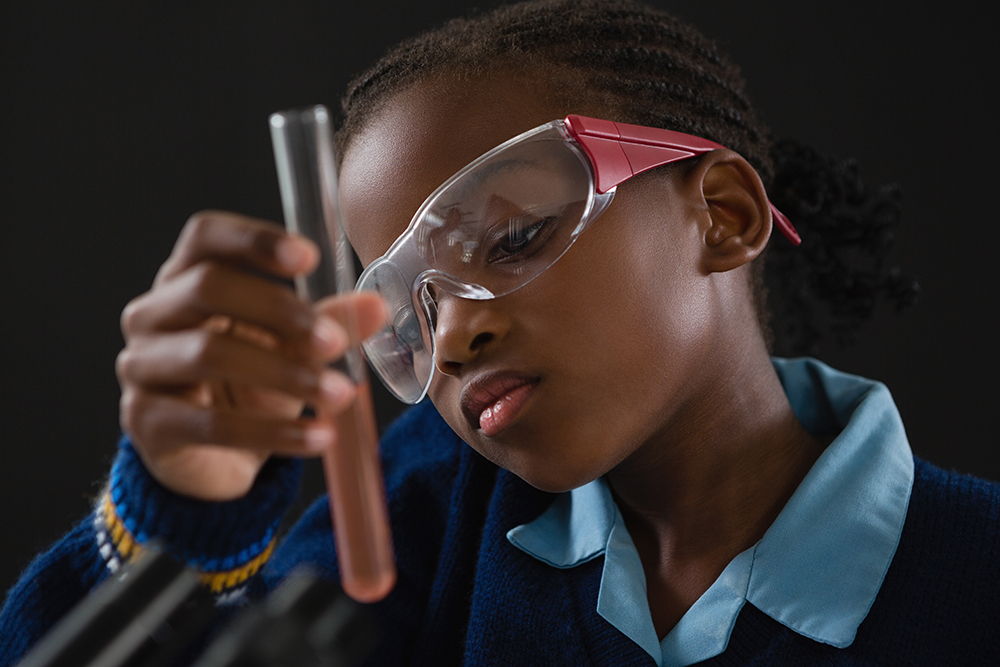Putting our prejudices to the test
Some time ago, a riddle went viral on social media. It was this one:
“A father and son are travelling by car and have a serious accident. The father dies on the spot and the son is seriously injured, his life hanging on a highly complex emergency operation, which can only be performed by an eminent doctor working in a nearby hospital. When he enters the operating theatre, the eminent doctor says: “can’t operate on him, he’s my son”. How can this be explained?
If you’re one of the 86% of people who didn’t get the answer, don’t blame yourself. These are prejudices. They have been implanted in you in your earliest childhood: by the media, parents, teachers and education systems. We have all done our bit. The riddle was part of research at Boston University that sought to prove the existence of intuitive gender biases.
And by the way: the medical eminence is the child’s mother. If you are one of the select 14% who got it right, congratulations. In this Observatory we know of an eminent medical professional who did not get the answer. Worst of all, it was a woman.
Let us continue to test our prejudices. Does the name Milena Marić mean anything to you? Not much, is it? Her husband Albert Einstein’s name will ring a bell. In addition to being the first wife of the famous scientist, Milena was an outstanding mathematician and physicist, to whom now, more than 60 years after her death, some research has attributed part of the authorship of her husband’s theories.
Hedy Lamarr was an Austrian woman who during World War II developed a remote-controlled torpedo detection system, which was the forerunner of today’s Wi-Fi. However, if her name rings a bell, it will be because she was type-cast as the most beautiful woman in the world and because she starred in what is known as the first nude in the history of cinema.
The list is long: Ada Lovelace, who laid the foundations for programming languages; Rosalind Franklin, who was the first to discover the structure of DNA, before Watson and Crick; Lise Meitner, discoverer of nuclear fission; Katherine Johnson, mathematician and key player in the space flight that took man to the moon…
The problem is more serious than it seems because, even today, the big names in the technological revolution are still male: Bill Gates, Steve Jobs, Mark Zuckerberg, Elon Musk, Jeff Bezos… Hello? Any women in the room? What is going on? Are they not interested in science? Do they lack the necessary skills? In the following lines, we will provide some data on the current situation of girls and women in relation to STEM (Science, Technology, Engineering and Mathematics) disciplines and we will advance some of the reasons for their low participation. Finally, we will provide some possible actions that can be taken, both collectively and individually, by public and private initiative, to begin to reverse this worrying trend. Let’s solve the inequality equation once and for all.
Zero role models + infinite prejudices = Few girls and women in science
What do the data tell us?
- Women make up 33.3% of the world’s research workforce (UIS, 2021).
- Only 35% of students in STEM careers are women (UNESCO, 2017).
- In Europe, only 29 out of 1,000 female graduates had a degree in computer science in 2015, and only four out of 1,000 went on to pursue careers in ICT (UNESCO, 2017).
- Enrolment rates are particularly low in ICT (3%); Natural Sciences, Mathematics and Statistics (5%), as well as in Engineering (8%). Participation is highest in health and well-being studies (15%), (UNESCO, 2017).
- Less than 5% of 15-year-old girls aspire to a career in mathematics or computer science (OECD).
- Women tend to receive more modest research scholarships than their male colleagues and, although they represent 33% of all researchers, only 12% of the members of national scientific academies are women (UNESCO, 2021).
- In cutting-edge fields such as artificial intelligence, only one in five professionals (22%) is a woman (UNESCO, 2021) and they make up just 14% of the cloud programming workforce (World Economic Forum Gender Gap Report 2021 of the World Economic Forum)
- Despite the shortage of professionals with skills in most of the technological fields driving the so-called fourth industrial revolution, women still represent only 28% of engineering graduates and 40% of computer science and informatics graduates (UNESCO, 2021).
How is it possible that half the world’s population is participating so little in fields that are so important and defining for the future of our society? What are the factors behind this data? What are we doing wrong?
Less than 5% of 15-year-old girls aspire to a career in mathematics or computer science.
Self-efficacy: a categorical variable

Imagen de brgfx en Freepik
To answer these questions and further clarify the X factor in the inequality equation, we need to explain a key variable: self-efficacy, a concept that refers to the confidence one has in one’s own abilities to cope successfully with certain situations. And why is it so important in this equation? We see it:
- Girls consider themselves to be less smart. According to a study by the journal Science, at the age of six, girls start thinking that they are not as clever as boys. The PISA data from 2015 show that girls have lower self-efficacy in science and mathematics than boys, a difference that has remained virtually unchanged since 2006.
- Girls make fun of their maths skills. An IDB study found that a third of students’ social media actions about women and girls in STEM were sexist, while 75% of all self-mocking messages about maths were posted by girls.
- Higher scores, lower self-efficacy. ICILS 2013 (the study that measures ICT literacy internationally) found that in grade 8, girls scored higher than boys in all participating countries in computer and information literacy, with an average difference of 18 points. However, once again, in all participating countries, girls’ perceived self-efficacy in advanced ICT skills was significantly lower than that of boys.
According to a study in the journal Science, at the age of six, girls begin to consider themselves less intelligent than boys.
Let’s talk about biases
As noted above, biases and stereotypes continue to exist and strongly condition the data on girls’ and women’s participation in scientific disciplines: parents with different expectations, teachers who praise them less, and education systems that neglect women scientists in their textbooks are some examples. We see this, once again with data:
- Family bias. Mothers and fathers often encourage their daughters to choose careers linked to the “female gender role”, instead of encouraging the study of careers linked to technology or pure sciences (FUNCAS, 2018). They also tend to have lower expectations about their daughters’ abilities in Mathematics.
- Teachers also stereotype. In 2013, TERCE found that, in Latin America, up to 20% of sixth grade mathematics teachers believed that mathematics was easier for boys. A meta-analysis in the US also found gender biases in teachers ‘ expectations of mathematics, which could influence girls’ performance. Another study carried out in the UK and Ireland also found that 57% of teachers had unconscious gender stereotypes in relation to STEM and that these gender biases can be passed on to their students through teaching.
- Education systems are no exception either. An analysis carried out by the UNESCO of the structure of 110 national curricula in primary and secondary school in 78 countries found that many Mathematics and Science textbooks and teaching materials express gender bias.
If women are not involved in the creation and development of the technologies of the future, we will be creating unfair and biased technology and contributing to the perpetuation of bias and stereotypes.
A vicious circle that perpetuates itself: algorithm bias
The result of these biases and beliefs is a vicious circle that works as follows: girls who consider themselves less smart than boys, young women and adolescents who exclude themselves from science and technology-related studies because they think they are not meant for them, and women who barely participate in science and technology-related jobs.
The problem is compounded when we consider that it is precisely these disciplines that are currently defining and shaping the future of our society. Because if women are not involved in the creation and development of the technologies of the future, we will be creating unfair and biased technology and contributing to the perpetuation of bias and stereotypes. Do you want an example? Easy: Google images about children care and person; now do the same search but change children care to technology. Incredible, right?

This is what Google shows when you search for “child care” and “person”.

This is what Google shows when you search for “technology” and “person”.
What can we do at school?
What can we do, from the school and education systems, to reverse this situation and level the playing field? The Observatory already mapped some very interesting initiatives that were being carried out to foster the interest and participation of girls and young women in STEM subjects, especially in vulnerable environments. Here we summarise some of them, grouped by objective:
Programmes to strengthen teaching capacity. We have already seen how the teacher’s biases, voluntary or involuntary, are a reality that ends up constraining girls’ choices. It is therefore vital to raise awareness and train teachers on the importance of educating in equality and not transmitting prejudices. For this purpose, there are programmes such as TeachHer a public-private partnership created by UNESCO that has created a corps of teachers and policy makers to equip teachers with the necessary skills; Ark of Inquiry is a project that applies the scientific method to engage girls in science and helps teachers with a comprehensive guide and checklist.

Programmes aimed at eradicating stereotypes. Girls’ perception of their own abilities, which in turn is conditioned by the lack of female role models, is another of the most decisive factors. It is therefore necessary to increase the presence of female scientists in textbooks and to eliminate biases in all school materials, as well as to establish current role models for girls to follow. It’s what makes STEM Girls Can, a Mexican mentoring network that includes inspirational talks and workshops; India’s Rocket Women which offers Indian girls a platform with activities aimed at breaking down barriers and prejudices with advice from real women who have succeeded in these disciplines; or STEM is for Girls which has succeeded in to reducing gender stereotypes among teenage girls in Peru.
Programas dirigidos a la erradicación de estereotipos. La percepción que las niñas tienen sobre sus propias capacidades que, a su vez, se ve condicionada por la falta de referentes femeninos, es otro de los factores más decisivos. Por ello es preciso aumentar la presencia de las científicas en los libros de texto y eliminar los sesgos de todos los materiales escolares, además de establecer referentes actuales que sirvan a las chicas de ejemplo a seguir. Es lo que hace Niñas STEM Pueden, una red de mentoras mexicana que incluye charlas inspiradoras y talleres; India’s Rocket Women, que ofrece a las chicas indias una plataforma con actividades destinadas a derribar barreras y prejuicios con consejos de mujeres reales que han triunfado en estas disciplinas; o STEM es para Chicas, que ha conseguido reducir los estereotipos de género entre adolescentes en Perú.
Active Participation Programmes. By teaching girls that scientific skills are not predetermined by gender and that they can be learned and developed, we build their confidence in their own abilities. The best way to do this is through action and experimentation. This is what the STEM Clinics in Ghana, the robotics and programming courses of Indian Grils Code the STEM camps in Kenya and the Costa Rican programme Girls in Technology set out to achieve.
The technological revolution will be egalitarian or it will not be a revolution worthy of the name
Human history has been built by ignoring and cancelling women, so to say that we are still in time to correct the injustice would be an unforgivable exercise in cynicism. We are late: millions of years late. Three industrial revolutions have passed us by. But, perhaps this time, the fourth time will be the one. Because the future cannot be built by ignoring 50% of the world’s population. This time, the technological revolution will be egalitarian or it will not be a revolution at all. The key, as always, lies in education.






